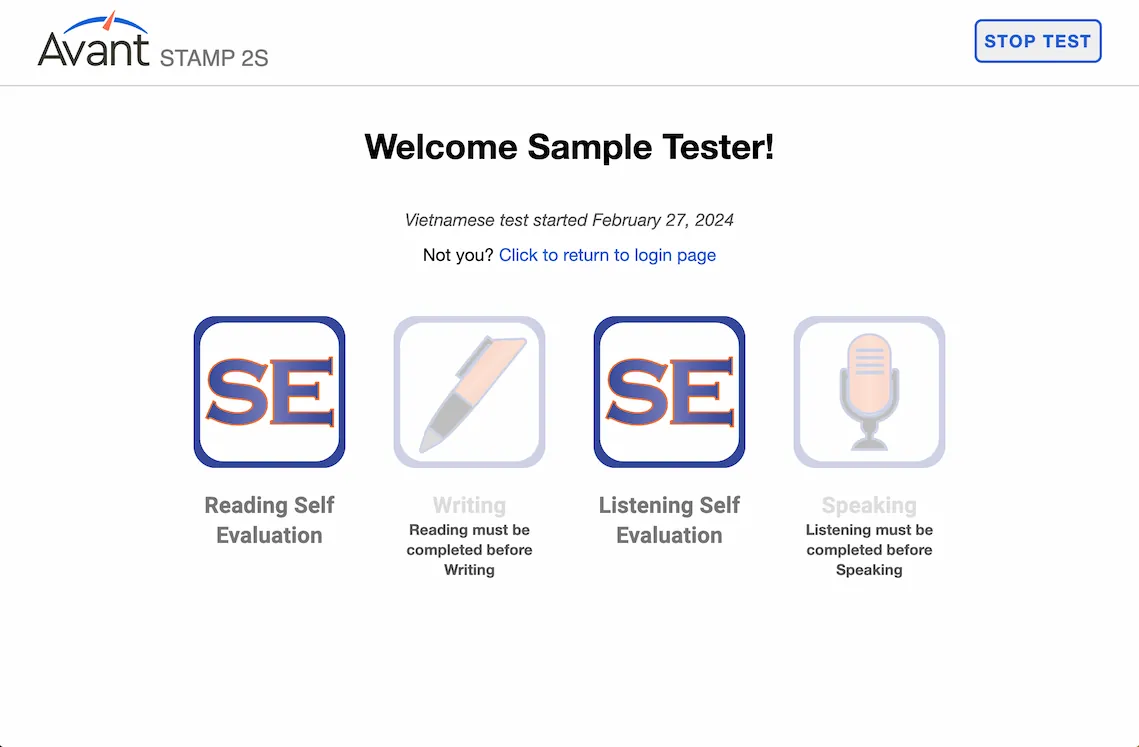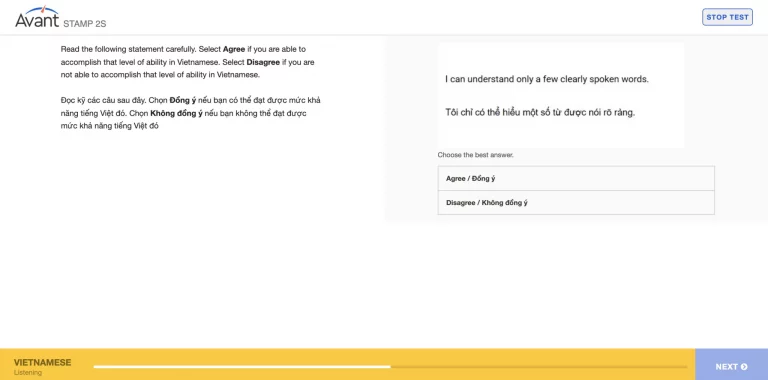The Avant STAMP WS language proficiency test is an online, semi-adaptive test. Test takers are asked to answer seven (7) self-evaluation Can Do Questions that best represent their skill/ability level in both the Reading and Listening sections. We use the self-evaluated reading score to determine the level of prompts we deliver for the writing prompts, and the self-evaluated listening score in the same way for the speaking prompts, thus making the productive sections more appropriately leveled for each test taker.
Dashboard View
Like all STAMP tests, test takers will enter a Dashboard to begin testing.
- Self-Evaluation Reading section has seven (7) Can Do Questions that must be completed before the Writing section.
- Self-Evaluation Listening section has seven (7) Can Do Questions that must be completed before the Speaking section.
- The Writing and Speaking sections will have three (3) prompts each.

Self-Evaluation Reading Section
- Self-Evaluation Reading section has seven (7) Can Do Questions. Test takers should read each statement carefully and then choose the answer that best fits their ability with this skill.
- Instructions and Can Do Questions are provided in both English and the testing language.
- Reading section must be completed before Writing section.
Self-Evaluation Listening Section
- Self-Evaluation Listening section has seven (7) Can Do Questions. Test takers should read each statement carefully and then choose the answer that best fits their ability with this skill.
- Instructions and Can Do Questions are provided in both English and the testing language.
- Listening section must be completed before Speaking section.
Updated:

